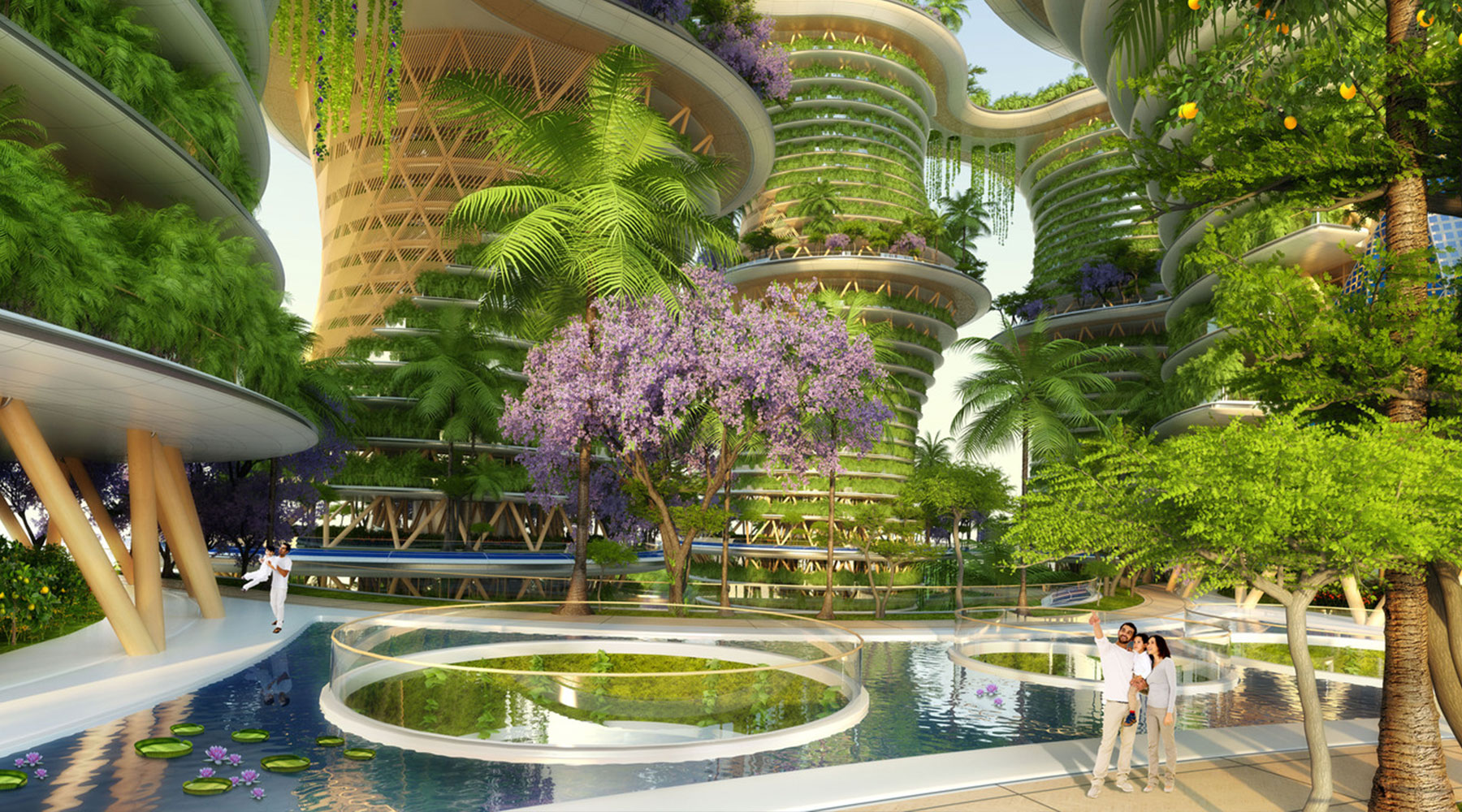

The "city of the future" will function as a testing ground for technologies like robotics, smart homes and artificial intelligence. Smart homes with in-home robotics systems to assist with daily living and sensor-based artificial intelligence to monitor health and take care of other basic needs. To be fully sustainable, with an ecosystem powered by hydrogen fuel cells and roads dedicated to self-driving, zero-emissions vehicles.
People, buildings, and vehicles all connected and communicating with each other through data and sensors, an ever-better way of life and mobility for all." Rooftops will be covered in photo-voltaic panels to generate solar power and hydrogen fuel cell power. The outdoors throughout our buildings will be styled with native vegetation and hydroponics. Streets for faster vehicles only, those for a mix of lower speed vehicles and pedestrians, and a park-like promenade for pedestrians only, will all result in a eco friendly environmentally pleasing design to our Urban life style . .
In new construction, we promote the broad use of energy and undertake energy-conserving renovations in existing buildings when upgrading functions, including the introduction of the latest environmentally friendly technologies. Furthermore, in terms of operations, we continue our initiatives aimed at reducing carbon in cooperation with clients .
LOBAS (Low-carbon Building and Area Sustainability) is an air-conditioning system that optimally combines multiple energy-conserving technologies, including the use of medium-temperature chilled water and low-temperature warm water, and heat collection using heat pumps (turbo chillers). Based on an electrical system, it is expected to conserve energy by approximately 40% compared to conventional methods.
Air-conditioning system using medium-temperature chilled and low-temperature warm water Air-conditioning method separating sensible heat and latent heat treatment using 13°C medium-temperature chilled water and 37°C low-temperature warm water
Large-scale thermal storage tank system Combination of a large-depth (approximately 30 m) cylindrical vertical thermal storage tank and a flat connected multi-level dipping weir heat storage tank (6,700 m³ in total).
These are just some of the new modern innovations being developed not only in large scale building projects but also now being developed for use in the domestic markets.




